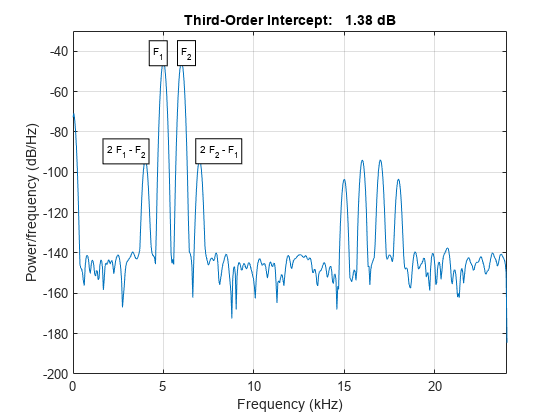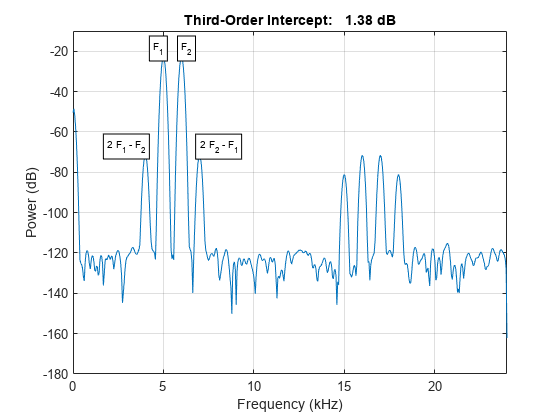toi
Third-order intercept point
Syntax
Description
[ also returns the power, oip3,fundpow,fundfreq,imodpow,imodfreq]
= toi(___)fundpow,
and frequencies, fundfreq, of the two fundamental
sinusoids. It also returns the power, imodpow,
and frequencies, imodfreq, of the lower and upper
intermodulation products. This syntax can use any of the input arguments
in the preceding syntaxes.
toi(___) with no output arguments
plots the spectrum of the signal and annotates the lower and upper
fundamentals (f1, f2) and
intermodulation products (2f1 – f2,
2f2 – f1).
Higher harmonics and intermodulation products are not labeled. The
TOI appears above the plot.
Examples
Input Arguments
Output Arguments
References
[1] Kundert, Kenneth S. "Accurate and Rapid Measurement of IP2 and IP3." Designer's Guide Community. May, 2002. https://designers-guide.org/analysis/intercept-point.pdf.
Extended Capabilities
Version History
Introduced in R2013b


